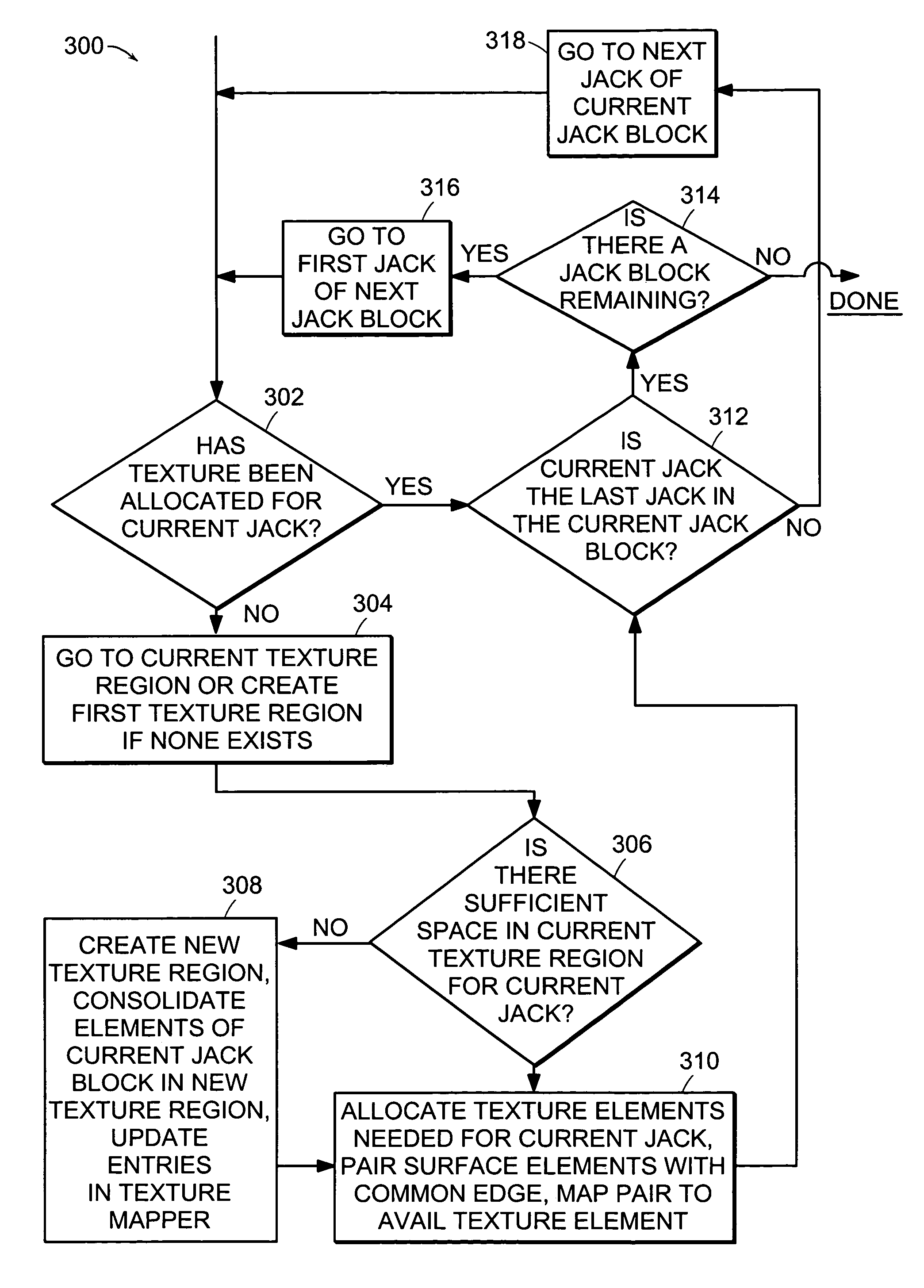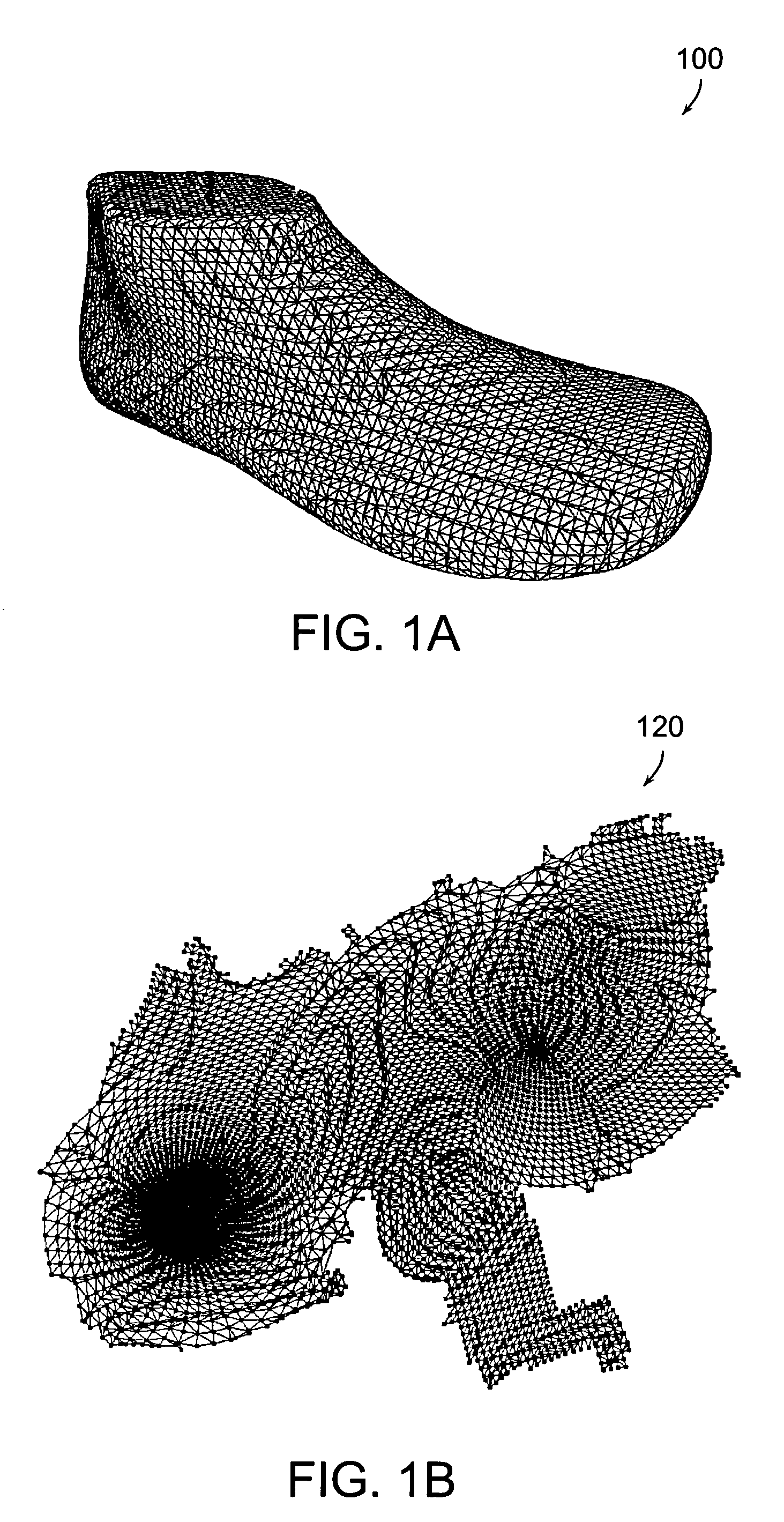Apparatus and methods for texture mapping
a texture mapping and texture technology, applied in the field of graphics rendering, can solve problems such as computational difficulty or intractable problems, automatic mapping process, and difficulty in achieving sufficient realism, so as to promote efficient binding, reduce the number of texture bindings required during rendering, and improve efficiency
- Summary
- Abstract
- Description
- Claims
- Application Information
AI Technical Summary
Benefits of technology
Problems solved by technology
Method used
Image
Examples
Embodiment Construction
[0059]The invention provides improved methods of graphically rendering the surface of a three-dimensional virtual object. The invention relates to a method of texture mapping that allows a user to switch between a paint mode and a sculpt mode without losing data. The method also provides for accurate and efficient rendering without requiring global parameterization.
[0060]Texture mapping is a process by which points on the surface of a three-dimensional virtual object are related to points on a two-dimensional surface. Texture mapping allows certain operations to be performed on the three-dimensional object as if it were flat. The three-dimensional virtual object is generally represented in object space, for example, as a system of elements and / or points in a Cartesian (x,y,z) coordinate system. The surface elements of the object are mapped to texture elements in two-dimensional texture space. The texture is then rendered by relating texels, or pixels in texture space, to correspondi...
PUM
 Login to View More
Login to View More Abstract
Description
Claims
Application Information
 Login to View More
Login to View More - R&D
- Intellectual Property
- Life Sciences
- Materials
- Tech Scout
- Unparalleled Data Quality
- Higher Quality Content
- 60% Fewer Hallucinations
Browse by: Latest US Patents, China's latest patents, Technical Efficacy Thesaurus, Application Domain, Technology Topic, Popular Technical Reports.
© 2025 PatSnap. All rights reserved.Legal|Privacy policy|Modern Slavery Act Transparency Statement|Sitemap|About US| Contact US: help@patsnap.com



